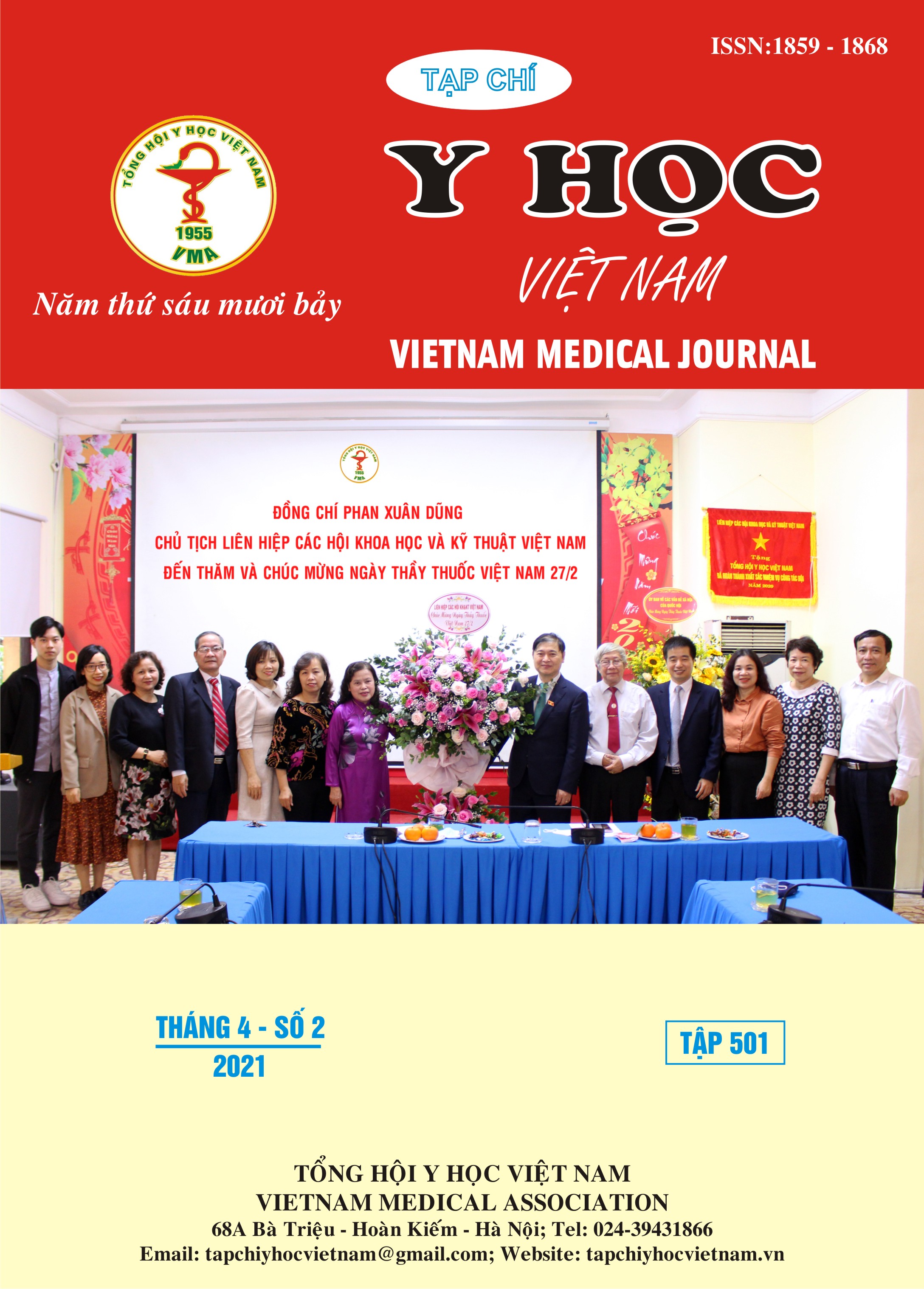NUTRITION STATUS OF CHRONIC RENAL FAILURE PATIENT WITH DIALYSIS CYCLE AT THAI NGUYEN CENTRAL HOSPITAL
Main Article Content
Abstract
Background: Patients with chronic renal failure and especially those with cyclic dialysis, are closely related to the patient's malnutrition status due to reduced protein and reduced energy reserves. Objective: To assess malnutrition status of patients with chronic renal failure with cyclic dialysis at Thai Nguyen Central Hospital in the year 2020. Research subjects and methods: The study was conducted according to the descriptive method, cross-sectional design on all chronic kidney failure patients with cyclic dialysis at the Department of Nephrology, Urology and Dialysis at Central Hospital. Thai Nguyen. Research results: Percentage of patients with chronic energy deficiency (BMI <18.5) accounted for quite a high rate (27.8%). The longer the patient's treatment time, the higher the rate of chronic energy deficiency (assessed by BMI) with p < 0.05. Assessment of nutritional status according to SGA method had up to 58.3% of patients with mild malnutrition, 2.2% of patients with severe malnutrition.
Article Details
Keywords
Malnutrition, chronic kidney failure, cyclic dialysis, Thai Nguyen Central Hospital
References
2. Ahmed.S, A.Molhem, et al (2011), “Nutritional assessmet of patients on hemodialysis in a large dialysis center", Saudi J Kidney Dis Transpl, pp. 675 - 681.
3. Nguyễn Thị Thúy Hồng (2019), “Tình trạng dinh dưỡng của bệnh nhân suy thận mạn tính có lọc máu chu kì tại bệnh viện đa khoa Phú Thọ”, Tạp chí Y học thực hành, tập 1181, tr. 115 - 117.
4. Trường Đại Học Y Hà Nội (2006), Hướng dẫn thực hành dinh dưỡng ở cộng đồng, NXB Y học, tr. 15 - 38.
5. Trần Thị Yến (2018), “Đặc điểm khẩu phần và một số rối loạn dinh dưỡng ở bệnh nhân suy thận lọc máu chu kì tại hai bệnh viện tỉnh Thái Bình năm 2017”, Luận văn thạc sĩ dinh dưỡng, Trường Đại học Y Dược Thái Bình, tr. 38 - 53.
6. Kaysen G, Dubin J, Muller H, Rosales L, Levin N (2000), The acute- phase response varies with time and predicts serum albumin levels in hemodialysis patients, The HEMO Study Group, Kidney Int, 58, pp. 346 - 352.
7. Trần Văn Nhường (2013), Tình trạng dinh dưỡng và một số yếu tố liên quan của bệnh nhân suy thận mạn tính có lọc máu chu kỳ tại bệnh viện hữu nghị Việt Đức năm 2012, Luận văn thạc sĩ y học, Trường Đại học Y tế công cộng, tr. 58 - 76.
8. WHO (2011), Global status report on noncommunicable diseases 2010, WHO press, 20Avenue Appia, 1211 Geneva 27, Switzerland, pp. 152 - 156
9. WHO expert consultation (2004), “Appropriate body-mass index for Asian populations and its implications for policy and intervention strategies”, The Lancet, 363, pp. 157 - 163.


